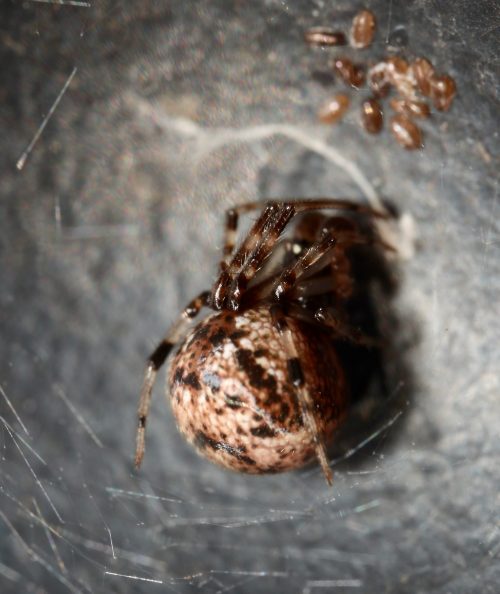I was checking out our compost bin, which is swarming with young juvenile spiders, and what jumped out at me was how fat they’re getting. These little spiders are growing fast and are turning into regular whales. This one, I noticed, had a secret stash — they’d corralled a bunch of baby isopods to snack on whenever they felt peckish.
Yum. All gathered into one spot, and tender and delicious nibbles, too. No wonder they’re getting so plump.
Personally, I’m feeling well satiated right now. I scheduled one class to turn in their final assignment last night, and another class to turn in their term papers tonight. I’d rather lick isopods off a compost bin lid than read any more student papers.



Can an arthropod become obese or does the exoskeleton prevent that from happening?
The abdomen has flexible armor — they can double in size and shrink back down.
So spiders (Arachnidae) don’t moult like many (most?) other invertebrates then? Their exoskeletons are flexible and can adjust to growth where most (all?) other insects, crabs, lobsters, etc .. do not. Why is that?*
Did not realise this although I guess I perhaps should’ve given the lack of any arachnid moult shells ever seen either in RL or on docos..Just never occurred to me before.
. * Yeah I know I could google but am interested in getting an expert’s opinion here.
No, they molt. It’s just that parts of their body are more accommodating to expansion. My tarantula has molted about 4 times so far, but I can also tell if they’re eating well by the size of their abdomen.
@ ^ PZ Myers : Ah. Okay, cool. So they’re flexible but not that flexible and their exoskeleton “skins” have their limits.
Just remembered something. Where I’m from, instead of “rollie polies,” we called isopods “potato bugs.” That’s an apt name in this case.